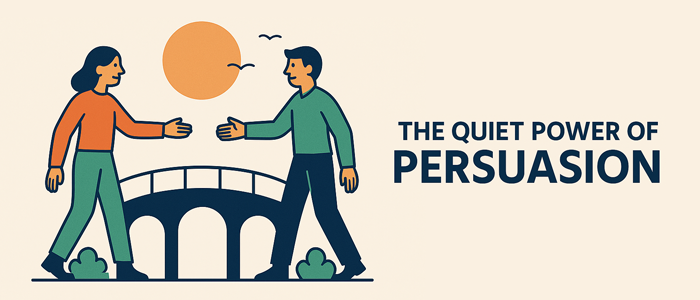Dearest Darling Friends,
According to a McKinsey report, over 70% of change initiatives fail — not because the ideas are bad, but because they lack buy-in.
That’s not a strategy problem. That’s a persuasion problem.
Ever noticed how the people who really move the needle in life aren’t always the loudest… or the smartest… or even the most experienced? They are the ones who can persuade.
Not in a snake-oil, slick-suit kind of way about whom people say, “He can sell ice to the eskimos”. Thats tricking and not persuading.
Genuine persuasion is in the quiet, steady art of aligning people, shaping thinking, and opening doors — without ever kicking them down.
Persuasion, when done well, is less like a bulldozer or a gun to the head and more like building a bridge.
It’s the difference between forcing someone to walk a path and inviting them to gladly walk it with you.
In my experience as a Business Coach, I have found that persuasion isn’t just a “nice to have” quality. It’s a super power quality.
- It builds trust (which, you will agree, is the currency of anything meaningful).
- It encourages action (not by demand, but through clarity, connection and most importantly, conviction).
- It promotes understanding — (the kind that makes room for nuance, not just noise).
- And above all, it drives change. (Real, sustainable, people-powered change).
And here’s the kicker: persuasion is invisible when done right. Like good design or great editing — it feels effortless, even though it isn’t.
When we say someone is ‘a natural leader’ or has ‘executive presence’ or has ‘charisma’, we’ are often responding to — how they make us feel heard, aligned, and (sometimes surprisingly) willing to move.
Not with pressure.
Not with manipulation.
But with meaning.
Looking back, I realise the moments that shaped my life were rarely about having the best argument or the best product or when I was in a position of strength. It was about helping others see why it mattered — to them.
That’s the quiet power of persuasion. And it’s worth honing.
What’s your take? Have you seen persuasion at work in subtle or surprising ways?

